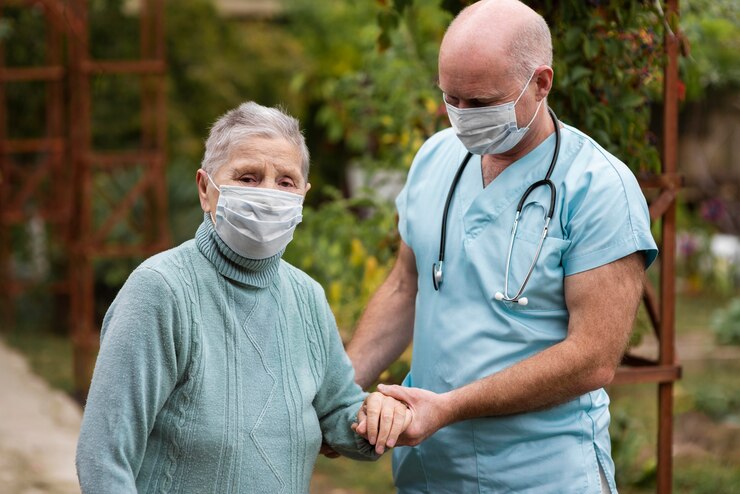30 Essential Facts and Statistics on Aging

Aging is a natural part of life that brings a wealth of changes—both challenges and opportunities. Understanding these changes can help seniors, their families, and caregivers better prepare for what lies ahead. With advancements in healthcare, lifestyle changes, and a deeper understanding of aging, older adults today live longer and more fulfilling lives than ever before. Here are 30 essential facts and statistics about aging that provide valuable insights into this important phase of life.
1. Growing Senior Population

The global population of people aged 60 and above is growing rapidly. By 2050, the number of seniors will reach over 2 billion, nearly doubling the current population. This demographic shift is reshaping societies and economies worldwide.
2. Life Expectancy is Increasing

Life expectancy for seniors has risen significantly over the past century. In 2021, the average life expectancy in the United States was approximately 79 years, compared to just 47 years in 1900. Advances in medicine, public health, and living conditions have contributed to this remarkable increase.
3. Women Tend to Live Longer Than Men

Globally, women generally live longer than men. On average, women outlive men by about five to seven years. Biological, social, and behavioral factors all play a role in this difference in life expectancy.
4. Chronic Diseases Are Common Among Seniors

Nearly 80% of older adults have at least one chronic condition, such as arthritis, diabetes, or heart disease. Managing these conditions is a key component of senior healthcare, focusing on maintaining quality of life and independence.
5. Seniors Are More Likely to Live Alone

In the United States, about 28% of people aged 65 and older live alone. This figure is higher for women, with nearly 36% living alone, compared to 19% of men. Living alone can impact mental and physical health, making community support and social connections crucial.
6. The Aging Workforce

More seniors are choosing to stay in the workforce longer. As of 2020, nearly 20% of Americans aged 65 and older were still working, a significant increase from previous decades. Factors such as financial necessity, desire for engagement, and better health contribute to this trend.
7. Cognitive Health Varies Widely

While cognitive decline is not an inevitable part of aging, it is common. Approximately 10% of people aged 65 and older in the U.S. have Alzheimer’s disease, with the risk increasing with age. However, many seniors maintain sharp cognitive abilities well into their later years.
8. Physical Activity is Vital

Regular physical activity is crucial for healthy aging. It can help reduce the risk of chronic diseases, improve mental health, and enhance mobility. The CDC recommends at least 150 minutes of moderate-intensity aerobic weekly exercise for older adults.
9. Seniors are Increasingly Tech-Savvy

Older adults are becoming more comfortable with technology. In 2021, 75% of adults 65 and older in the U.S. reported using the internet, and nearly half owned a smartphone. This trend is expected to continue as technology becomes more integrated into daily life.
10. The Importance of Social Connections

Social connections are vital for emotional well-being and can even impact physical health. Seniors with strong social networks are less likely to experience depression, cognitive decline, and other health issues. Community involvement and maintaining relationships are key to aging well.
11. Financial Security is a Concern

Many seniors face financial insecurity, with 15% of Americans aged 65 and older living below the poverty line. Rising healthcare costs, inadequate savings, and declining traditional pension plans contribute to this issue.
12. Housing Preferences are Changing

More older adults are choosing to “age in place,” staying in their homes as long as possible. To accommodate this, many are modifying their homes for accessibility and safety. Additionally, there is a growing trend towards senior living communities offering various care levels.
13. Mental Health Awareness is Growing

Mental health is an important aspect of aging. Around 20% of people aged 55 or older experience some type of mental health concern, such as anxiety or depression. Increased awareness and resources are helping to address these issues.
14. The Role of Caregivers

Caregivers play a crucial role in supporting seniors. In the U.S., over 43 million people provide unpaid care to an adult aged 50 or older. Family members often step into these roles, which can be rewarding and challenging.
15. Healthy Eating is Essential

Nutrition plays a significant role in healthy aging. A balanced diet rich in fruits, vegetables, whole grains, and lean proteins can help prevent chronic diseases, boost energy levels, and improve overall well-being.
16. Seniors Contribute Significantly to Volunteering

Older adults are highly active in volunteering. In 2020, over 25% of seniors in the U.S. volunteered, contributing billions of hours of service to their communities. Volunteering offers a sense of purpose and helps maintain social connections.
17. Access to Healthcare is Crucial

Access to healthcare services is vital for seniors. Medicare provides health coverage for Americans aged 65 and older, but many still face high out-of-pocket costs for prescriptions, dental care, and long-term care services.
18. The Importance of Preventive Care

Preventive care, such as regular check-ups, screenings, and vaccinations, is essential for maintaining health in older adults. Early detection and management of health issues can significantly improve outcomes.
19. The Impact of Aging on the Economy

The aging population is having a profound impact on the economy. In the U.S., healthcare spending for older adults is more than triple that of working-age individuals. The demand for age-related services, such as assisted living and home care, is rising.
20. Seniors are Traveling More

Travel is becoming increasingly popular among seniors. Many older adults have the time, resources, and desire to explore new places. Travel can provide enrichment, socialization, and physical activity.
21. The Role of Pets in Aging

Pets can play a positive role in the lives of older adults. Studies have shown that pet ownership can reduce stress, lower blood pressure, and provide companionship, contributing to better mental and physical health.
22. Education and Lifelong Learning

Lifelong learning is beneficial for cognitive health and overall well-being. Many seniors take advantage of educational opportunities, such as community college courses, workshops, and online classes, to learn new skills and stay mentally active.
23. The Rising Cost of Long-Term Care

Long-term care costs are a significant concern for many seniors. In the U.S., the average cost of a private room in a nursing home is over $100,000 per year. Planning for these expenses is crucial to ensure financial stability in later years.
24. Seniors are More Politically Active

Older adults are more likely to vote and participate in political activities than younger age groups. In recent elections, voter turnout among seniors has been consistently higher, reflecting their commitment to civic engagement.
25. The Growing Popularity of Telehealth

Telehealth services have become more popular among seniors, especially during the COVID-19 pandemic. Virtual healthcare appointments can provide convenient access to medical professionals, particularly those with mobility issues or living in remote areas.
26. Ageism is a Persistent Issue

Ageism, or discrimination based on age, is a significant issue affecting seniors. It can lead to social exclusion, reduced access to services, and negative stereotypes. Combating ageism requires increased awareness and advocacy for the rights of older adults.
27. The Benefits of Mindfulness and Meditation

Mindfulness and meditation practices are gaining popularity among seniors for their mental and physical health benefits. These practices can help reduce stress, improve focus, and enhance overall well-being.
28. The Influence of Culture on Aging

Cultural attitudes toward aging can significantly impact how seniors are treated and perceive themselves. In some cultures, older adults are revered and respected, while in others, they may face marginalization. Understanding these cultural differences is important in fostering a more inclusive society.
29. Seniors and Entrepreneurship

Many older adults are starting new businesses or pursuing entrepreneurial ventures. With experience, skills, and financial resources, seniors are well-positioned to launch successful businesses and contribute to economic growth.
30. The Importance of End-of-Life Planning

End-of-life planning is a critical aspect of aging. It includes making decisions about medical care, finances, and legal matters. Having a plan in place can provide peace of mind and ensure an individual’s wishes are honored.
Conclusion

Aging is a complex and multifaceted process that affects every aspect of our lives. By understanding these facts and statistics, we can better appreciate the challenges and opportunities of growing older. Whether staying active, planning for the future, or engaging in lifelong learning, many ways exist to embrace aging and live a fulfilling, healthy life. By staying informed and proactive, seniors can navigate this stage confidently and gracefully.





